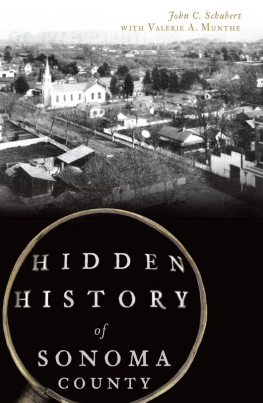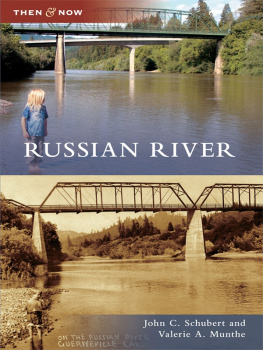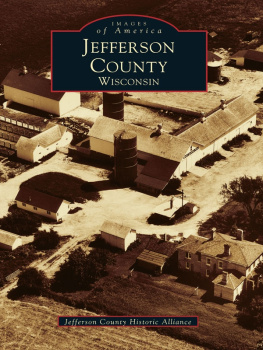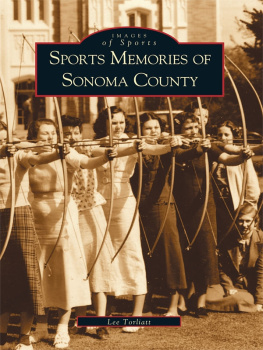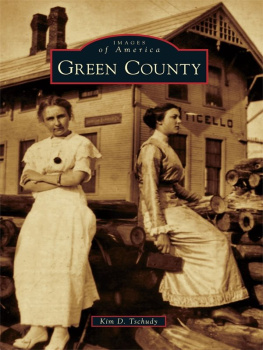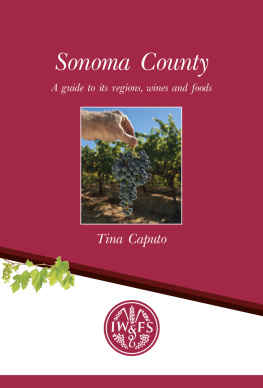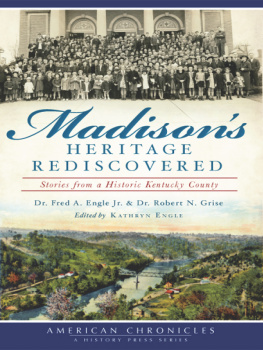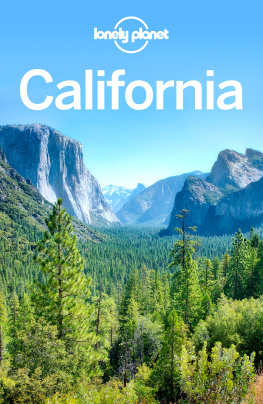


Published by The History Press
Charleston, SC
www.historypress.net
Copyright 2017 by John C. Schubert and Valerie A. Munthe
All rights reserved
Front cover: Downtown Santa Rosa, 1895. The Methodist Episcopal Church at the upper left stood on the southeast corner of D and Third Streets. Third Street continues west past the Grand Hotel at the lower right. The picture was taken from the top of the old courthouse. Courtesy Don Silverek Collection.
First published 2017
e-book edition 2017
ISBN 978.1.43966.375.2
Library of Congress Control Number: 2017948493
print edition ISBN 978.1.46713.827.7
Notice: The information in this book is true and complete to the best of our knowledge. It is offered without guarantee on the part of the authors or The History Press. The authors and The History Press disclaim all liability in connection with the use of this book.
All rights reserved. No part of this book may be reproduced or transmitted in any form whatsoever without prior written permission from the publisher except in the case of brief quotations embodied in critical articles and reviews.
John: To my grandchildren: Jasmine, Sabrina, Johnna, Heather and Doran.
Valerie: To all the women writers and recorders of history who have inspired me to take up the pen and make my voice relevant. Dedicated also to my three children, Atreyu, Jadziah and Stella, without whom my motivation would be entirely self-serving. And last, but certainly far from least, my best friend and husband, Jesse, for his dedication to our family and his support of my dreams.
CONTENTS
ACKNOWLEDGEMENTS
The authors would like to extend their gratitude to the following organizations for contributions to the stories herein:
State of California:
Armstrong Redwoods State Natural Reserve (Sonoma County)
Railroad Museum and Archives (Sacramento)
California Department of Transportation
Maritime Museum (San Francisco)
Sonoma County Offices of:
Sheriff
Board of Supervisors
County Clerk
County Recorder
Transportation
Law Library
Historical Societies of
Healdsburg and Museum
Sonoma County
Russian River
Northwestern Pacific Railroad
Eugene Public Library
John: Without support and indulgence by family and friends, I wouldnt be able to chase the demons of history, capture them and pen them down on paper. And there have been many that have helped in this endeavor over the decades. First and foremost has been Sarah, who has traveled through the decades with me in pursuit of many stories throughout California and then some. She has proofread many of these histories and helped direct me in my writings. Secondly have been fellow historians in their own right: Valerie Munthe, Jane Barry, Glen Burch, David W. Perry, C. Raymond Clar, Clare Harris and Charlie Siebenthal. The following people have also contributed greatly to these pursuits: Jack Hetzel, Alta Luttrell, Tony Hoskins, Katherine Rinehart, Joan Guillauminmy deepest appreciation and thanks to you all. A special acknowledgement and thank-you goes to Valerie Munthe, who shepherded me through her editing, photo work and the electronic maze of todays modern technology.
Valerie: Acknowledgement on my behalf is owed to those who allowed me time and space to ignore their needs so I might work, including my family, friends and colleagues. A special acknowledgement to Sarah Brooks for her tenacious proofreading skills and allowing me to hijack Johns attention. Also credit is due to my darling husband, Jesse, and older children, Atreyu and Jadziah, for dutifully caring for our infant daughter, Stella, so that Mommy can work. And last but not least, to John Schubert, without whom the opportunity to write historical manuscripts would be made a lot more difficult and far less entertaining.
INTRODUCTION
When John approached me some years ago with yet another manuscript, I did not realize then how much my own voice would be involved in its creation. Over the span of forty years, John compiled data and composed these twelve stories. Throughout our professional relationship, I have often teased him about his staccato style of writingfacts, lightly adorned narratives, sprinkled in here and there. However, given the nature of historical writings, I worried that the attention span of his reader would suffer; thats where I came in. Armed with witty rhetoric and a storytellers voice, I took up the challenge of putting color to the black-and-white scenes of Sonoma Countys past. Within a year, the combination of his hard work and my editorial skills transformed these stories, laden with academic prose, into the body of work presented within these pages.
Our previous publication, Stumptown Stories: Tales of the Russian River, was created in a very similar fashion; he wrote the original stories, I typed them from photocopies of newspaper clippings and compiled them, along with relevant images, into a cohesive manuscript. It was cut and dry. However, this collection that you are about to read was a completely different experience. Instead of featuring a character like the Ol Timer of Stumptown Stories, each story stood as separate chronicles of the past, being more academic in nature. Each required hours of research, writing, editing and illustrating in order to bring to life this precious history.
What makes this book so unique to the others? Each story presents a perspective of Sonoma County that, Im certain, inquiring minds have, at some point in life, pondered about. Why is Bodega Bay named so? How did our Sheriffs Office develop? What is the relevance of Old West lawlessness to Sonoma County? In his usual fashion, John set out to answer these questions, some stories taking years to gather sufficient facts and data that would eventually morph into articles. However, these stories, although celebrated among the history enthusiasts of the county, sat for many years unnoticed by the public at large.
Reading in chronological order, these hidden histories begin with Captain Bodega y Quadra and the earliest known explorations of Sonoma County and the Pacific coastline. Then, taking to the valleys of Santa Rosa and Healdsburg, youll learn about the Pomo, the Miwok and the Wappo natives and their interactions with European explorers. Fort Ross makes its appearance as we examine what life was like during a time of assimilation for the Kashaya Pomo. Read further about a wave of crime that hit northern Sonoma County in Stand and Deliver!, award-winning tobacco cultivated in Cloverdale, a mob taking the law into its own hands, houses of ill fame in Santa Rosas downtown neighborhood, the rise of the automobile and so much more.
We invite you, the reader and fellow history enthusiast, to explore the hidden histories of Northern Californias Sonoma County.
Valerie Munthe
Chapter 1
A JOURNEY OF DISCOVERY
The Story of Bodega y Quadra
This story was awarded the Editors Award in December 1988 by the Sonoma County Historical Society.
In western Sonoma County, the name Bodega occurs in many locations, the most well known of which is Bodega Bay, a small coastal village located just ten miles south of the mouth of the Russian River. This small community has, over the years, become the seaside attraction of Sonoma County, complete with its harbor, hiking trails and beautiful landscape. But how did it become Bodega Bay? Spanish for wine cellar, this small inlet of sea water was named in honor of its discoverer, Spanish naval officer and Peruvian native Don Juan Francisco de la Bodega y Quadra.
Next page
